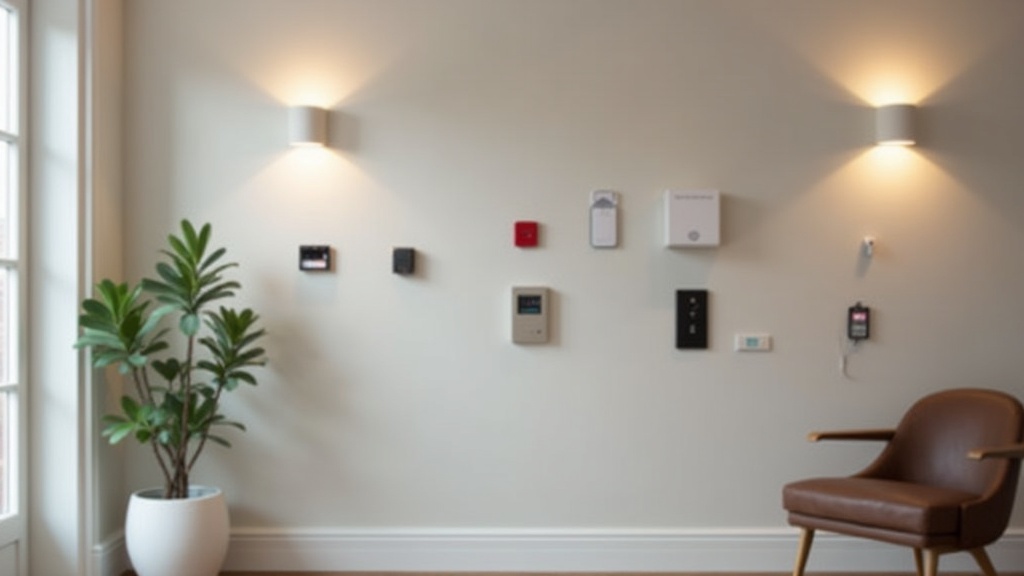Smart home security brings a lot of benefits to elderly and disabled people who want more independence and peace of mind. The right mix of technology and thoughtful setup can make everyday life a lot safer without making things complicated. I’m going to walk you through some helpful devices, practical setup advice, and the most common questions about smart home security for seniors and people with disabilities.

How Smart Home Security Supports Independence
Smart home technology started off pretty basic, but now you can find devices that handle just about everything from checking who’s at the door to calling for help if there’s an accident. These systems are designed to be simple enough for everyday use, even for someone who isn’t tech savvy. For elderly or disabled users, these smart home gadgets add another layer of safety and can reduce worry for both themselves and their loved ones.
The smart security market has grown fast in the last decade, and it’s not just about fancy gadgets. Devices now focus specifically on accessibility, using features like voice control, large buttons, and easy automation. For people with limited mobility or health conditions, not needing to get up to check a door or turn on a light can make a big difference in both comfort and safety.
Key Devices for Elderly and Disabled Home Security
Devices that help elderly people live safely at home focus on protection, convenience, and quick response if something goes wrong. The list of options may look overwhelming at first, so I’ve highlighted the gadgets that I think are really useful and practical for most people.
- Medical Alert Systems: Wearable buttons or pendants that connect directly with emergency contacts or response centers.
- Smart Doorbells with Cameras: Video doorbells let you see and talk to visitors without going to the door. If mobility is a challenge, answering the door through a smartphone or speaker is pretty handy.
- Smart Locks: Electronic locks you can control remotely or with a simple code; really great if you have trouble with keys, or want to let in trusted family or caregivers without needing to get up.
- Motion Sensor Lights: These turn lights on automatically, making it safer to move around at night and cutting down on fall risks.
- Security Cameras: Indoor and outdoor cameras can stream video right to your phone or computer, providing constant peace of mind for both the homeowner and relatives.
- Smoke, Carbon Monoxide, and Water Leak Detectors: Smart versions can send alerts to your phone; super useful if hearing alarms is tough or you’re often in another part of the house.
- Voice Assistants: Smart speakers (like Amazon Alexa or Google Home) let you control devices hands-free, ask for help, or check the status of your home quickly using just your voice.
The single most important device for elderly safety at home is usually the medical alert system. A reliable alert system quickly gets help during emergencies, whether that’s a fall or some other health scare. Many newer models also include fall detection, which triggers an alert even if the user isn’t able to push a button.
Setting Up a Smart Home Security System
You don’t need to be a tech expert to make a home safer. With some planning and a few simple upgrades, you can handle most setup tasks yourself. Companies like ADT, SimpliSafe, and Ring have special packages that are easy to install and adjust for accessibility needs.
- Choose a user-friendly alarm system: Brands like Medical Guardian and Bay Alarm Medical offer alarm systems designed for seniors. They combine medical alerts, door sensors, and easy panic buttons, all with very clear instructions and large buttons. If you’re looking for something broader, SimpliSafe and Ring are popular for their simple setup and useful mobile apps. Both offer options where professionals monitor the home 24/7, and you always have a quick way to contact help.
- Keep Control Simple: Make sure the system you pick uses big, readable displays, simple remotes, or voice commands. Some companies even offer touchscreen hubs with large icons and reading-friendly layouts.
- Add Fall and Activity Sensors: Place motion sensors in common walkways. Many alarm systems, like those offered by Lifeline, will check activity levels and send alerts if there hasn’t been movement for a while–a useful option for checking in discreetly.
- Adjust for Visual or Hearing Changes: Consider smart lights and alarms that use flashing lights or vibration. Some smoke detectors can be linked to bed shakers or visual strobe alerts. For vision support, look for voice enabled alarm controls and devices that talk you through each step.
- Connect with Family or Caregivers: Most systems let you share alerts and real time camera footage with trusted contacts. Relatives can get notifications on their phones, check if a door was left open, or see that their loved one is up and about, all from anywhere.
Making a Home Safer: Smart Proofing Tips
Home safety isn’t just about gadgets; it’s also about setup and habits. Here are some steps I recommend for safety proofing a home for elderly people or those with disabilities:
- Clear Walkways: Keep floors and hallways free of rugs, cords, and clutter to lessen fall risk. Place furniture so there are wide paths for walking or wheelchairs.
- Use Automation: Automate lights to go on with motion or at set times. No more fumbling for a switch or walking through rooms in the dark.
- Install Smart Plugs: Plug dangerous appliances (like kettles or stoves) into smart outlets so they can be turned off remotely if forgotten.
- Ramp Up Bathroom Safety: Nonslip mats in tubs and showers, grab bars, and water resistant emergency buttons all help reduce risk. There are also smart water leak detectors to flag problems before a slip happens.
- Label Key Items: Mark important or frequently used buttons with large print, tactile stickers, or voice guides.
- Regular Check-Ins: Set reminders using a smart assistant for medication, hydration, or scheduled check-ins with family.
Combining basic home safety with easy to use smart tech is the quickest path to a home that feels both safe and comfortable for seniors and disabled users. It’s a good idea to talk with those living in the home about their comfort with technology and make gradual improvements, so the smart systems never feel overwhelming.
Helpful Smart Home Devices for Elderly People
Here are a few examples of practical smart home devices tailored to seniors and people with disabilities:
- Smart Thermostats: Adjust the temperature from anywhere in the house or by voice, helping avoid hazards from too hot or too cold rooms.
- Automatic Door Openers: Devices that open and close doors using a remote or button, handy for wheelchair users or those with weak grips.
- Smart Blinds: Motorized, app-controlled window coverings let you adjust lighting and maintain privacy without standing up or reaching.
- Locator Tags: Small smart tags that go on keys, wallets, or medication bottles; track and ring lost items using a smartphone app.
- Voice-Controlled Reminders: Set up important daily reminders with a voice assistant so nothing important slips through the cracks.
Smart refrigerators and kitchen devices can be helpful, too. The latest fridges can remind you when food is about to expire or when it’s time to grocery shop. Smart ovens have lockout features to prevent accidents. Even robot vacuums and smart speakers can make daily cleaning and communication easier, letting seniors and people with disabilities handle routines more smoothly and safely. Try starting with one gadget at a time, building up as comfort grows.
Common Questions About Smart Home Security for the Elderly and Disabled
What is the most important device that can help elderly people?
The most important device for elderly safety at home is often a medical alert system with a wearable panic button. This device offers fast help in an emergency, whether it’s a fall or a medical issue, and keeps everyone’s minds at ease.
What is the best alarm system for the elderly?
A few top choices for alarm systems include Medical Guardian, Bay Alarm Medical, and SimpliSafe. These brands are known for user-friendly controls, strong customer support, and reliable features like monitoring services, easy to press emergency buttons, and mobile apps. What’s best really comes down to how much support is offered and how simple the system is to use.
What are smart home devices for elderly people?
Smart home devices for elderly people can be video doorbells, smart locks, automated lights, security cameras, smoke/CO detectors that send alerts, medical alert wearables, voice assistants, smart thermostats, and smart plugs. These gadgets add both convenience and safety, making daily tasks a lot easier and lowering risks of accidents.
How to safety proof a home for the elderly?
To safety proof a home, start with clear walkways, install nonslip bathroom gear, set up bright, automated lighting, use medication and activity reminders, and add smart plugs for controlling appliances remotely. Motion sensors and cameras can alert you if something’s unusual. All these changes together make staying home much safer and more doable for seniors and people with disabilities.
Wrapping up, the key to smart home security for elderly and disabled people is picking technology that’s simple, effective, and tailored to daily needs. Start with basic safety devices, then add extra comfort gadgets as you go along. As technology keeps changing, the options will only get better, making life at home safer and more independent for everyone.
